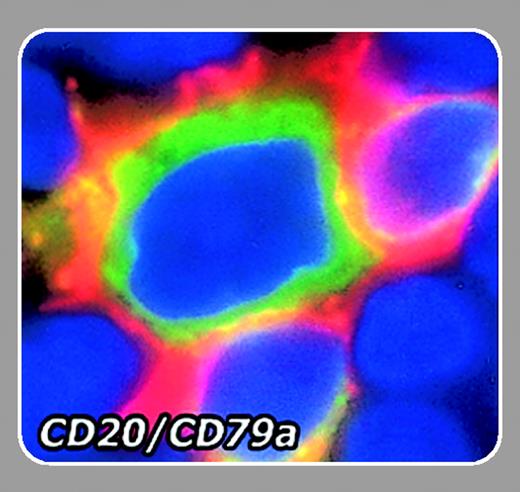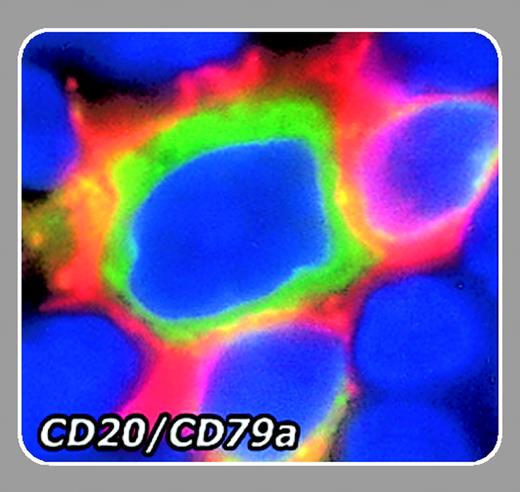When B cells are activated by the binding of foreign antigens to their B-cell receptor, the activated B cells may undergo a germinal center (GC) reaction in lymphoid organs, such as lymph nodes. In the GC, B cells modify their B-cell receptor by somatic hypermutation, and cells expressing receptors with improved affinity will be positively selected. Traditionally, 2 differentiation pathways are recognized for GC B cells. Some cells will differentiate into plasma cells and secrete large amounts of antibody. Other GC B cells will differentiate into long-lived, small, resting memory B cells that play a central role in preventing disease upon re-encounter with the same antigen. However, there may be more types of post-GC B cells than recognized in this scheme.FIG1
In the work by Marafioti and colleagues (page 2868), a population of interfollicular large B cells is elegantly characterized in great detail. It is shown that these cells, which were described already 20 years ago but never analyzed thoroughly, are distinct from the main well-known B-cell subsets. The high load of somatic mutations in their immunoglobulin (Ig) genes and the lack of expression of GC B-cell markers suggests that these cells represent post-GC B cells. However, they are distinct from classical memory B cells as well as from plasma cells: they lack detectable levels of the memory B-cell marker CD27, many of these cells are proliferating, and about half of the cells express multiple myeloma oncogene protein 1 (MUM-1), a transcription factor found in plasma cells and a few (late) GC B cells but not in memory B cells. Arguments against a plasma cell identity of these cells include negativity for the plasma cell markers CD38 and CD138. Thus, the origin and function of the interfollicular large B cells is still unclear. Are these cells recent GC emigrants, perhaps on the way to becoming plasma cells? Are they memory B cells that were restimulated to become large cells and undergo clonal expansion? What is the relevance of the dendritic processes on these cells? While the dendritic morphology points to a cellular interaction with surrounding T cells, the lack of expression of CD80 and CD86—2 key molecules for T-cell/B-cell interaction—by the large B cells seems incompatible with this idea.
The work by Marafioti and colleagues is also relevant for lymphoma biology. There are still some B-cell lymphomas for which the histogenetic origin is unclear. Examples of such a lymphoma include diffuse large B-cell lymphomas that show a gene expression profile resembling in vitro–activated B cells.1 Thus, this subtype of diffuse large-cell lymphoma is still searching for its normal counterpart in vivo. Intriguingly, the “ABC” type of diffuse large-cell lymphoma is characterized by somatically mutated Ig genes, lack of expression of GC B-cell and plasma cell markers, and, in most cases, expression of MUM-1, features shared with interfollicular large B cells.1
In summary, the comprehensive study by Marafioti and colleagues throws light on a long-disregarded subset of human B cells and will stimulate future studies to reveal its role in the immune response and its potential connection to particular B-cell lymphomas.



